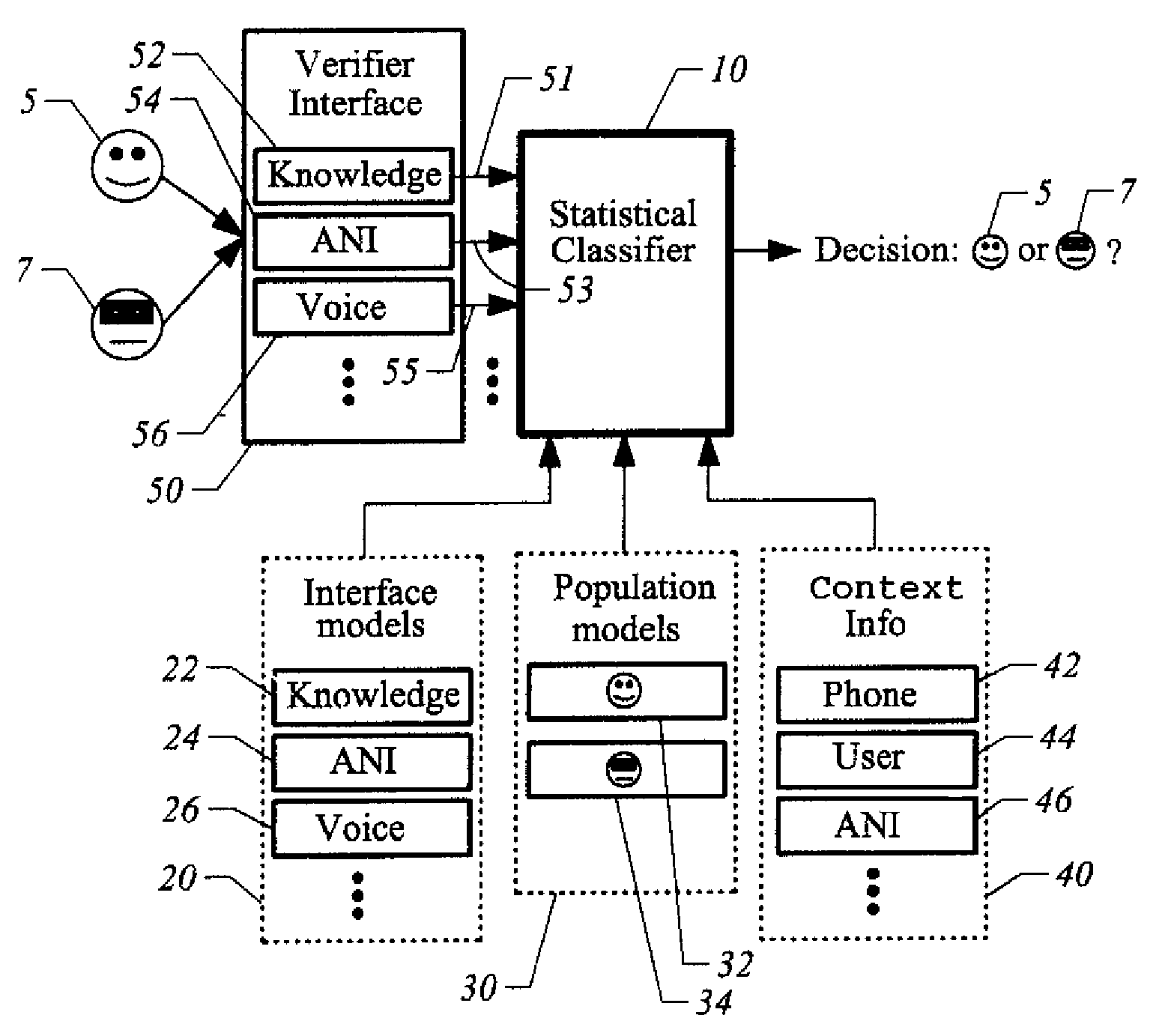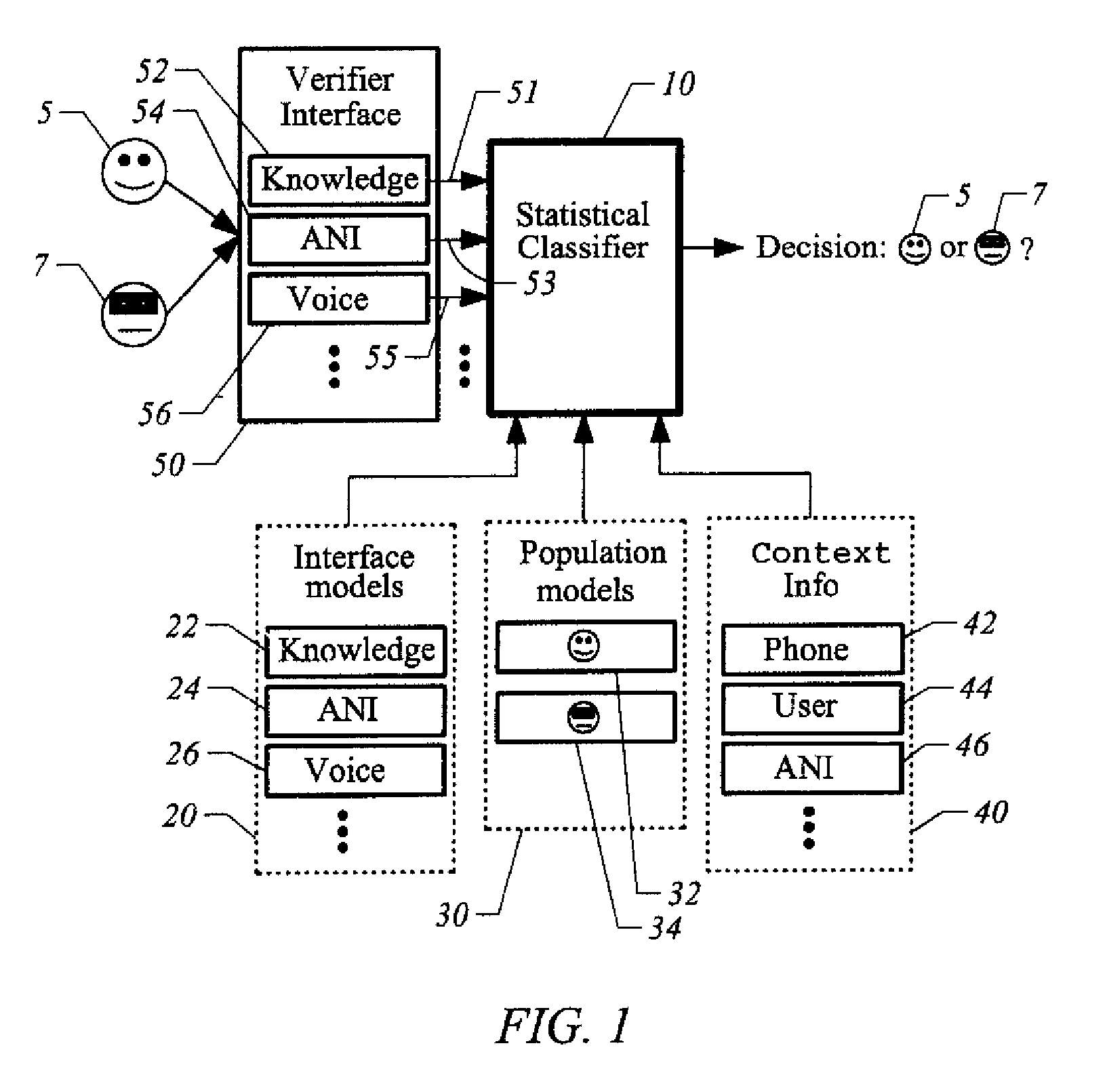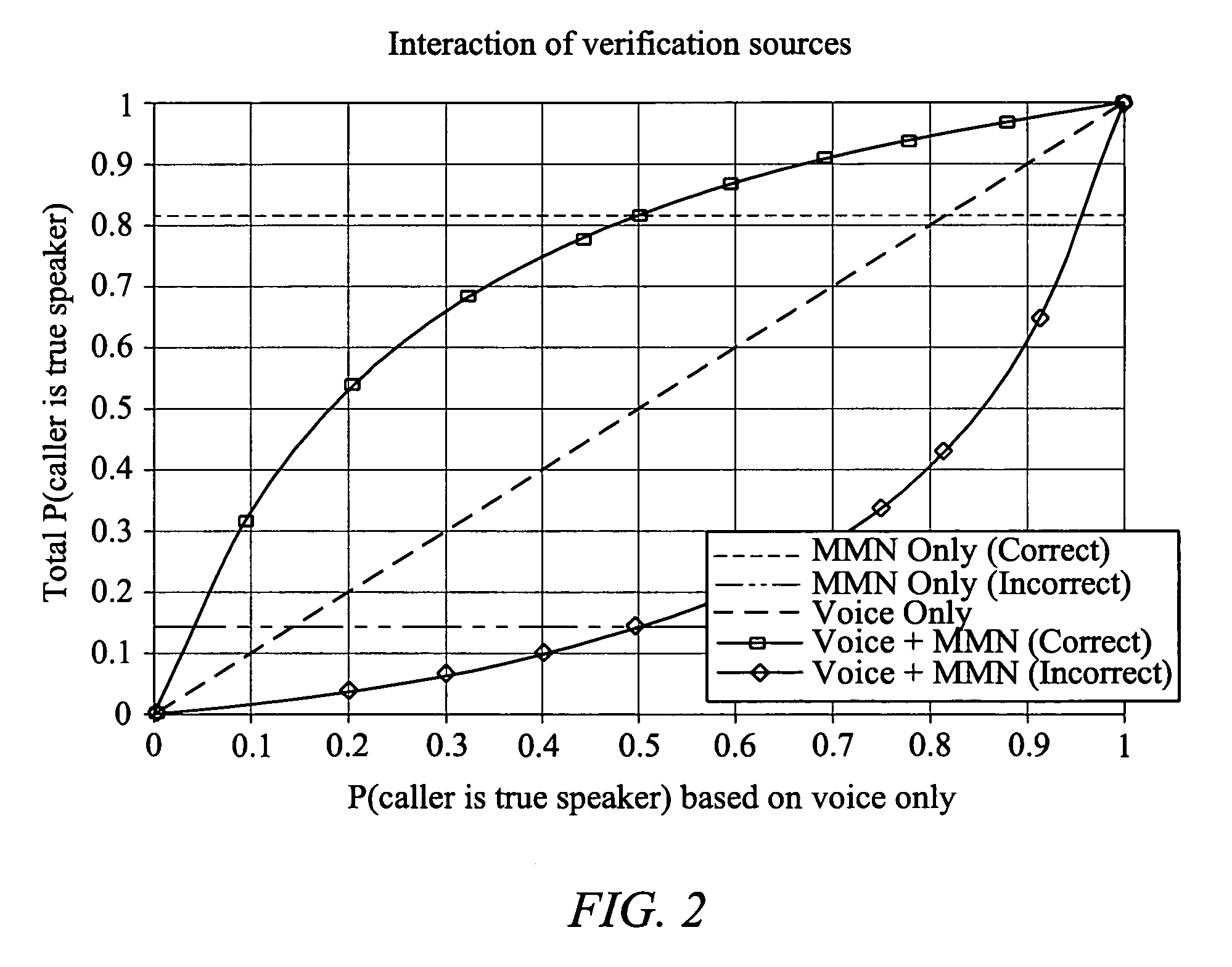System and method for providing improved claimant authentication
a claimant authentication and claimant technology, applied in the field of claimant authentication, can solve problems such as the association probability of errors, and achieve the effect of increasing the accuracy of claimant authentication and facilitating “tune” (manipulated or optimized)
- Summary
- Abstract
- Description
- Claims
- Application Information
AI Technical Summary
Benefits of technology
Problems solved by technology
Method used
Image
Examples
Embodiment Construction
[0016]Referring now to FIG. 1, shown is a block diagram illustrating an embodiment of the present invention. The embodiment represented is a system for authenticating a claimant, determining whether or not a person is who they are claiming to be. If the person is who they are claiming to be, they are classified as a true speaker 5. If that person is not who they are claiming to be, they are classified as an impostor 7. At the core is a statistical classifier 10 which comprises some instantiation of a basic classification algorithm, such as a Bayes classifier. Those skilled in the art will readily recognize that other classifiers could be used or developed to achieve the desired result. At a high level, this embodiment of statistical classifier 10 utilizes two statistical model sets: an interface model set 20 and a population model set 30. Once again, those skilled in the art will readily recognize that additional model sets, existing or later developed, may be used to increase the a...
PUM
 Login to View More
Login to View More Abstract
Description
Claims
Application Information
 Login to View More
Login to View More - R&D
- Intellectual Property
- Life Sciences
- Materials
- Tech Scout
- Unparalleled Data Quality
- Higher Quality Content
- 60% Fewer Hallucinations
Browse by: Latest US Patents, China's latest patents, Technical Efficacy Thesaurus, Application Domain, Technology Topic, Popular Technical Reports.
© 2025 PatSnap. All rights reserved.Legal|Privacy policy|Modern Slavery Act Transparency Statement|Sitemap|About US| Contact US: help@patsnap.com



